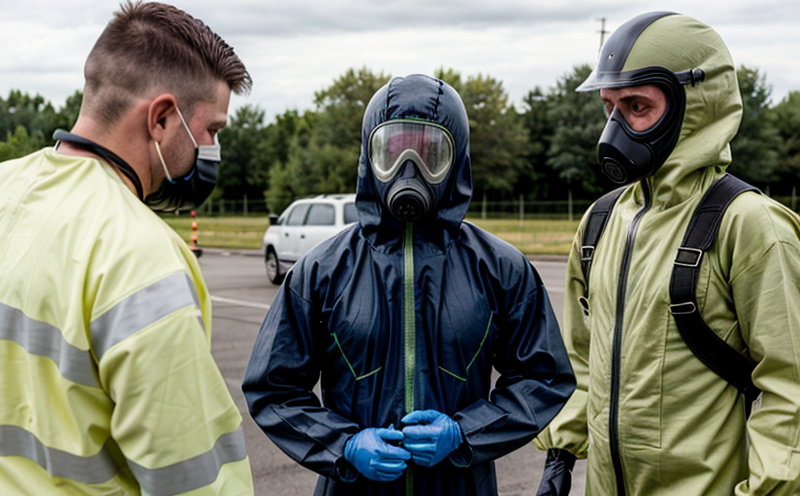Chemical resistant suit inspection
The inspection of chemical-resistant suits is a critical step in ensuring occupational safety and compliance with regulatory standards. These suits are designed to protect workers from exposure to hazardous chemicals, biological agents, or other harmful substances. The integrity of these protective garments can be compromised by wear and tear over time, improper storage, or even during use.
Chemical-resistant suits come in various types, each tailored for different levels of protection against specific chemical hazards. Common materials include nitrile, PVC, butyl rubber, neoprene, and others. Each material has its own set of performance characteristics, which must be validated through rigorous testing.
Our inspection service ensures that the suits meet or exceed industry standards such as EN 14925:2008 for chemical resistance and EN ISO 374-1 to -6 for biological protection. The inspection process includes visual inspections, material tests, and permeation testing.
During a visual inspection, any visible damage or deterioration is noted. This might include tears, punctures, or discoloration that could indicate structural weaknesses. Material tests assess the integrity of the fabric under stress conditions to ensure it can withstand the intended chemical exposure without failure.
The most critical part of the inspection process is permeation testing. Permeation refers to the gradual passage of a chemical through the material of the suit, which could lead to skin contact and potential hazards. This test involves exposing the suit to various chemicals for a specified period under controlled conditions. If the chemical passes through the fabric within the set time frame, it indicates that the suit no longer provides adequate protection.
The testing process is designed to simulate real-world scenarios where workers might encounter these hazardous substances. By adhering to international standards such as EN 14925:2008 and EN ISO 374-1 to -6, we ensure that the inspection results are reliable and consistent across different environments.
Our team of experts uses state-of-the-art equipment to conduct these inspections. We employ advanced instrumentation capable of detecting minute changes in material properties, ensuring precision in our assessments. The results of each inspection are detailed in a comprehensive report, providing clear recommendations for any necessary repairs or replacements.
Scope and Methodology
| Inspection Procedure | Materials Tested | Testing Environment | Expected Outcomes |
|---|---|---|---|
| Visual Inspection | Chemical-resistant suit fabric, seams, and closures | Controlled laboratory conditions | Detailed report on visible defects and damage |
| Material Testing | Physical properties of the chemical-resistant suit materials | Standardized environmental chambers | Evaluation of material strength, elasticity, and durability |
| Permeation Testing | Chemical resistance against specific hazardous substances | Simulated chemical exposure conditions | Determination of the permeability rate for each tested chemical |
Industry Applications
- Chemical manufacturing and processing plants where workers are exposed to hazardous chemicals.
- Rubber and plastics industries that handle a wide range of chemical compounds.
- Hospitals and laboratories dealing with biological agents and infectious materials.
- Mining operations where exposure to toxic substances is a concern.
- Emergency response teams operating in hazardous environments requiring full-body protection.
Customer Impact and Satisfaction
The impact of our chemical-resistant suit inspection service extends beyond compliance with regulatory standards. By ensuring the integrity of these protective garments, we help prevent workplace accidents and illnesses that could result from exposure to hazardous materials.
Our service is highly valued by quality managers, compliance officers, R&D engineers, and procurement specialists who rely on our expertise to maintain high safety standards within their organizations.
Customers often report increased confidence in the protective capabilities of chemical-resistant suits, leading to improved worker morale and productivity. The detailed reports we provide also assist in making informed decisions regarding suit replacement schedules and material selection.





